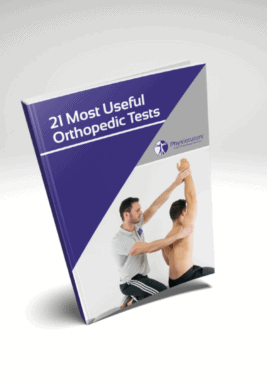Learn
Caradeniz Wrist Rules | Wrist Fracture Screening
Although only 39% of patients presenting to the emergency department with wrist trauma have sustained a fracture, the majority of patients are routinely referred back for radiography. For this reason, the Caradeniz wrist rules were developed in order to decrease the number of x-rays in suspected distal radius, distal ulna and carpal bone fractures within 24 hours after acute wrist traumas.
According to Karaca et al. (2016), the Caradeniz wrist rules have a sensitivity of 100% and a low specificity of 6.6 % in the detection of wrist fractures. These results have not been externally validated yet, which is why we give the rule a moderate clinical value to rule out wrist fractures.
The Decision Rule contains the following items. Due to their provocative nature, we propose the following order:
- Ask your patient to perform active dorsiflexion of the wrist
- Ask your patient to perform active radial deviation
- Palpate the distal ulna for sensitivity
- The radioulnar drawer test: Stabilize your patient’s distal radius with the dorsum of his hand facing upwards. Then apply alternating dorsal-volar stress to the distal ulna. This test is positive if you patient reports pain or if there is increased movement compared with the other side.
- Axial compression tests: Hold on to the metacarpal bone and give axial pressure on the rapezium and scaphoid. Perform the same axial pressure with the metacarpal bones 2 – 5.
All of the 5 items are considered positive if pain is provoked. In the radioulnar drawer test, an increased amplitude of movement compared to the other side is considered as a positive test as well.
In case all 5 items are negative, a fracture of the radius, ulna, and carpal bones could be ruled out with 100% confidence in the study of Karaca et al. (2016).
21 OF THE MOST USEFUL ORTHOPAEDIC TESTS IN CLINICAL PRACTICE

If you want to screen for fractures in other body parts, check out the list below:
- Elbow Extension Test (Elbow)
- Supine Sign (Thoracic Spine)
- Closed-Fist Percussion Test
- Patellar Pubic Percussion Test (Hip)
- Fulcrum Test (Femur)
- Ottawa Knee Rules (Knee)
- Ottawa Ankle Rules (Ankle & Foot)
Like what you’re learning?
BUY THE FULL PHYSIOTUTORS ASSESSMENT BOOK
- 600+ Pages e-Book
- Interactive Content (Direct Video Demonstration, PubMed articles)
- Statistical Values for all Special Tests from the latest research
- Available in 🇬🇧 🇩🇪 🇫🇷 🇪🇸 🇮🇹 🇵🇹 🇹🇷
- And much more!








